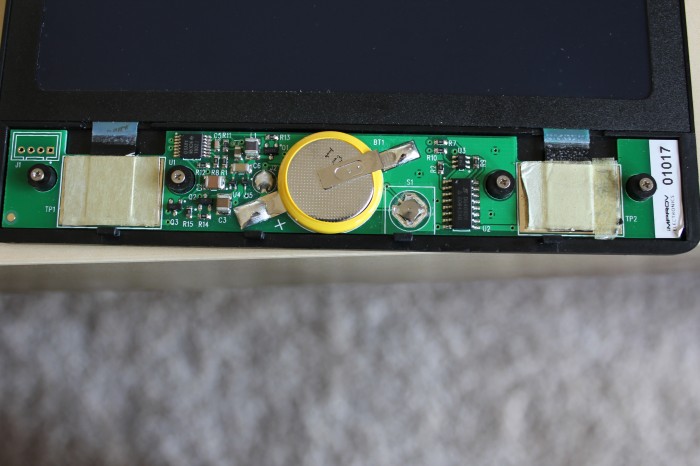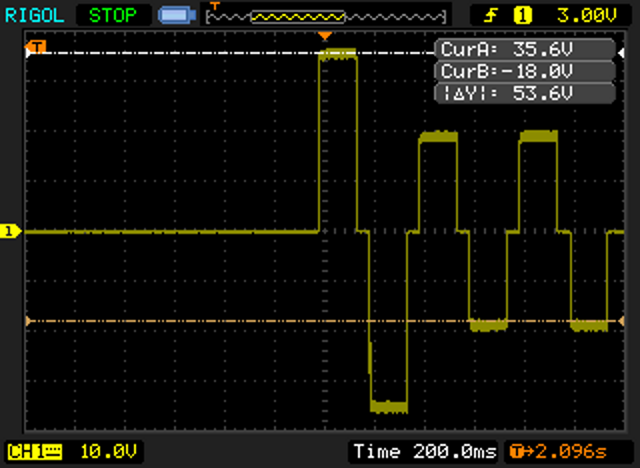Sometimes a project is just not meant to be. I picked up a Boogie Board LCD Writing Tablet when they went on sale to satiate my gadget addiction. I didn’t expect it to be hackable, as it is little more than a glorified chalkboard, but I figured I’d give it a try. My goal was to be able to lighten what was drawn on the screen, rather than erase it completely, to allow for the possibility of greyscale, or greenscale in this case.
I cracked it open (literally, I didn’t realize there were screws under the sticker), and found a more complex machine than I expected. The brains of the tablet are an MSP430F2001, one of the cheaper microcontrollers in TI’s MSP430 lineup. The header on the left hooks up to the programming pins, so anyone out there with a GoodFET might want to take a look at writing new firmware for it. Unfortunately, I didn’t have one.
The waveform below captured between the two big pads, TP1 and TP2, shows how the cholesteric LCD refreshes. On pressing the button, the power circuitry on the left generates 36v for 400ms, followed by 18v for 800ms, and feeds it to the multiplexer on the right. The MSP430 toggles the input pins on the mux to switch that input voltage back and forth between the two pads in 150ms pulses, flashing the screen green and black and clearing what was drawn on it.
Unfortunately, while lifting the PCB up to see the traces on the bottom, I snapped one of the connections to the LCD, rendering the tablet useless. Hopefully someone can pick up where I left off, modify the firmware on the MSP430, and see if its possible to make the LCD go only partway cleared by using shorter or fewer pulses.


